Part 66: Midwest: April 16, 1945

The prelude for this battle is over, and now we're about to mount some major attacks. St. Louis in the center is somewhat weakly defended, but there's a significant American force to the north that may threaten our flank if we don't guard the Missouri bridges. Farther north, a struggle is about to take place over Minneapolis, where our forces are comparatively meager. In both places we need a quick victory so that we can make it to Chicago.
Axis Turn 10: April 16, 1945
Fair (Dry)
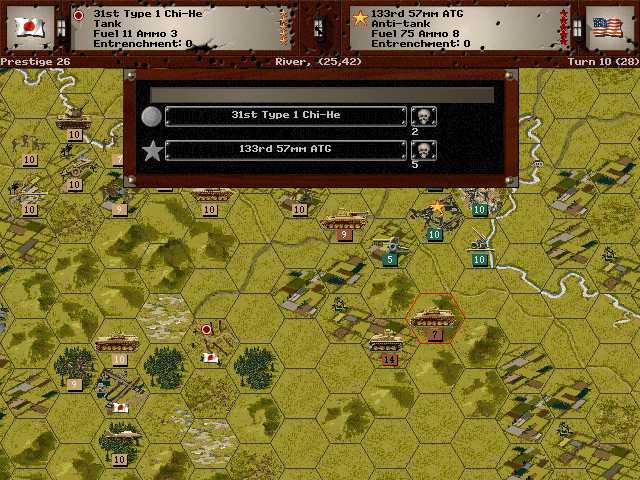
Our tanks reach St. Louis and begin battering the American defenders.
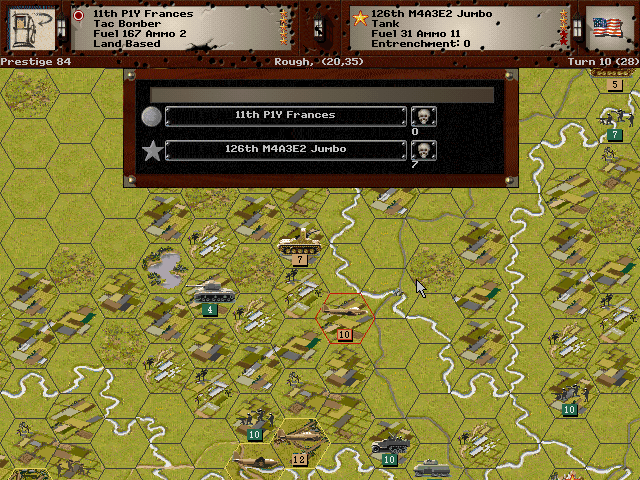
We have solid control the skies west of the Mississippi. Our bombers suppress the units in the salient north of the Missouri River.

The Battle of the Twin Cities gets underway as we knock out some artillery guns. Their infantry's still well-entrenched, however.
Allied Turn 10: April 16, 1945
Fair (Dry)
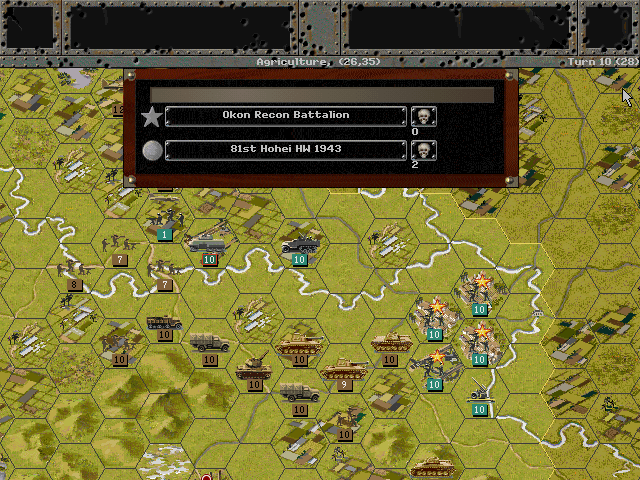
The Americans keep making a play to interfere with our advance on St. Louis from the north side, but they can't cross the river.
Axis Turn 11: April 17, 1945
Fair (Dry)
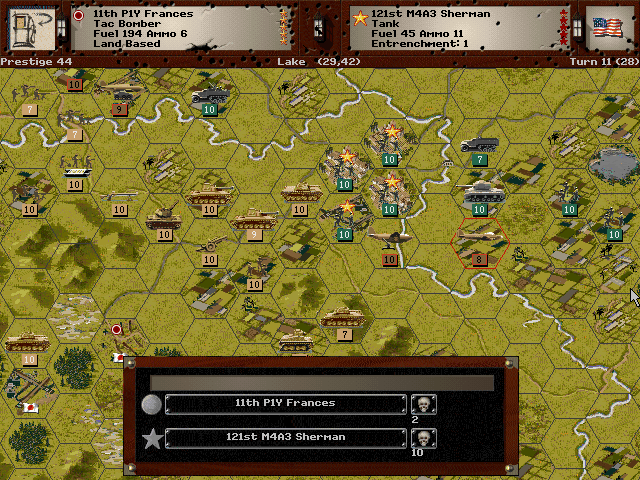
It seems the delays were an attempt to hold us up until the reinforcements arrived. We instead launch air strikes at the tanks before they can reach the city.
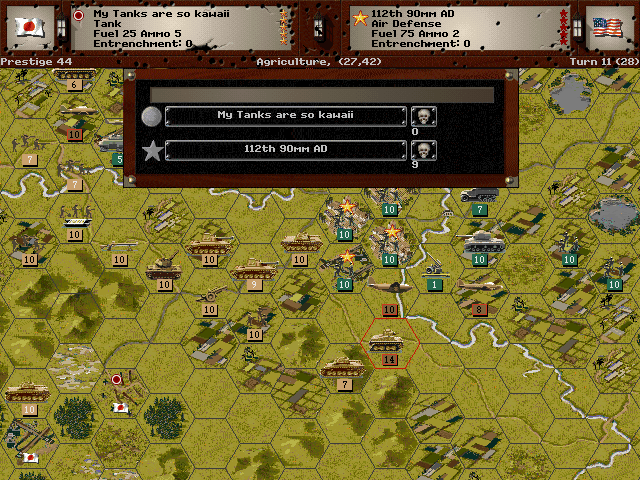
The effort is only made possible with a simultaneous attack on the air defenses of St. Louis.
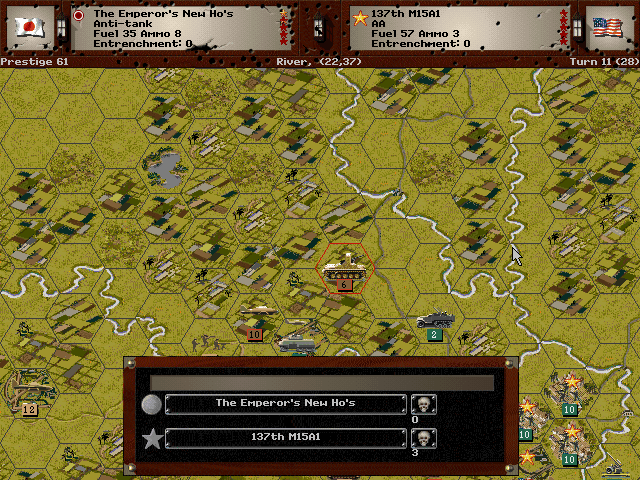
Mobile guns are shifted from the Chicago assault force to deal with the remaining forces in northern Missouri.
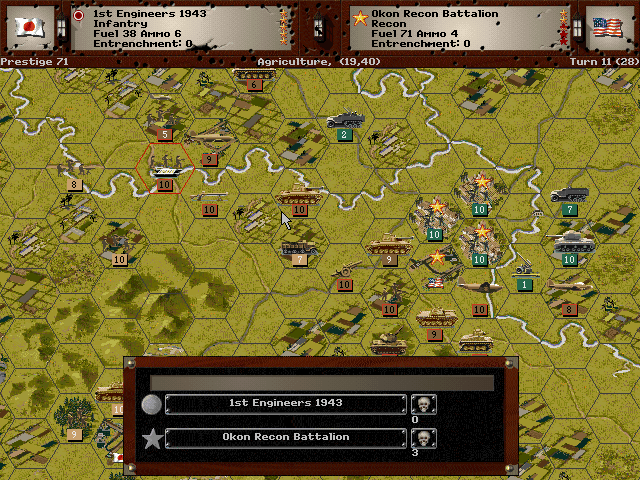
We've pretty much got it under control now.
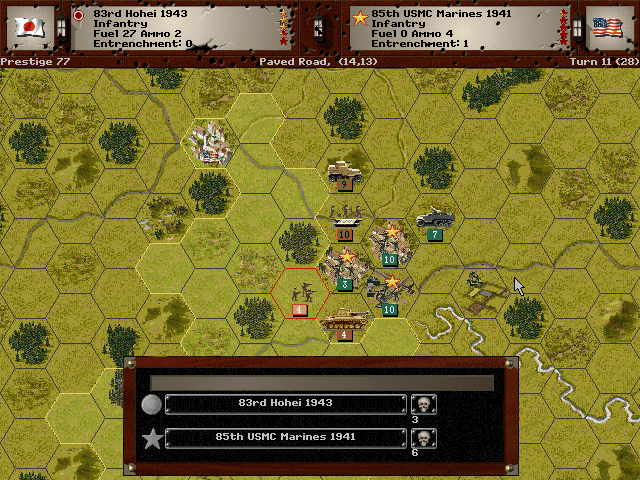
Fighting is intense in the Minneapolis streets.
Allied Turn 11: April 17, 1945
Fair (Dry)
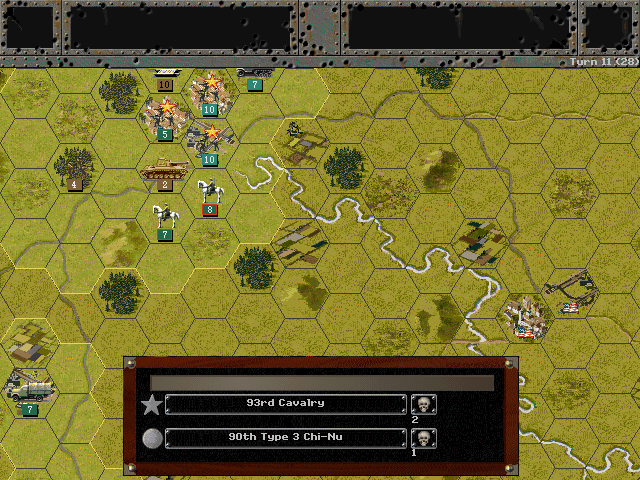
The US cavalry arrives at Minneapolis; they take heavy losses against the modern tanks, but do manage to wear them out enough to make them ineffective as an offensive force.
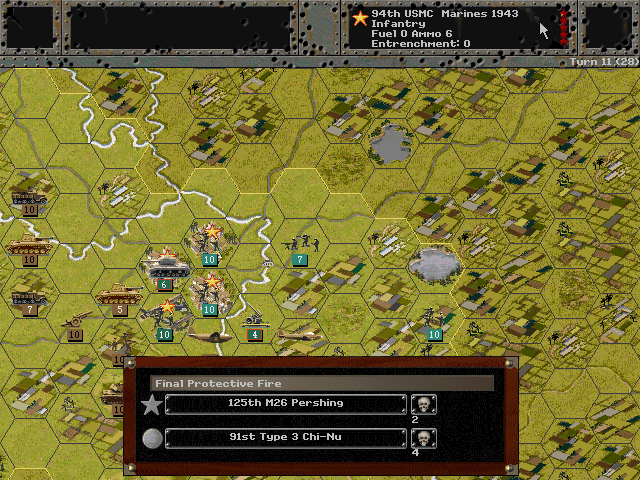
Reinforcements do arrive at St. Louis. The Pershing tanks shake off artillery fire and end up smashing our front-line armor.
Axis Turn 12: April 17, 1945
Fair (Dry)
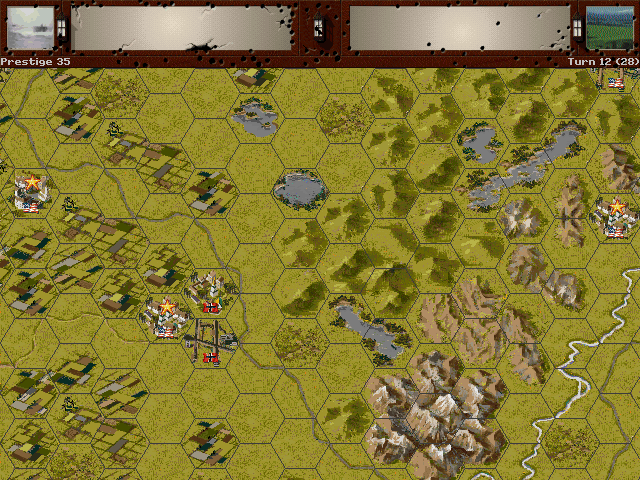
The Germans are advancing into other parts of Tennessee.
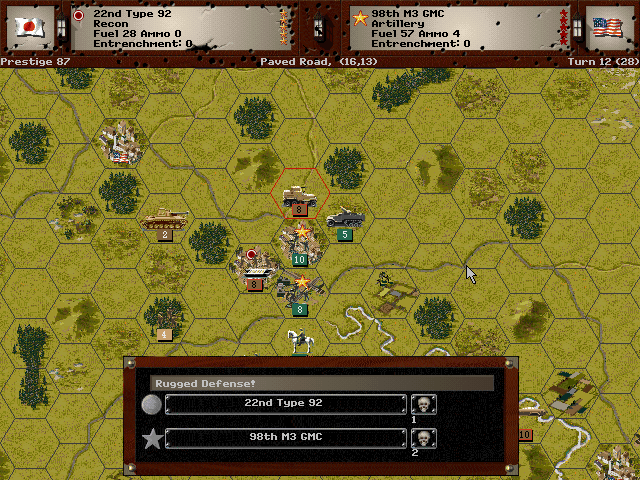
We capture part of Minneapolis, but need to take a break to recover strength.
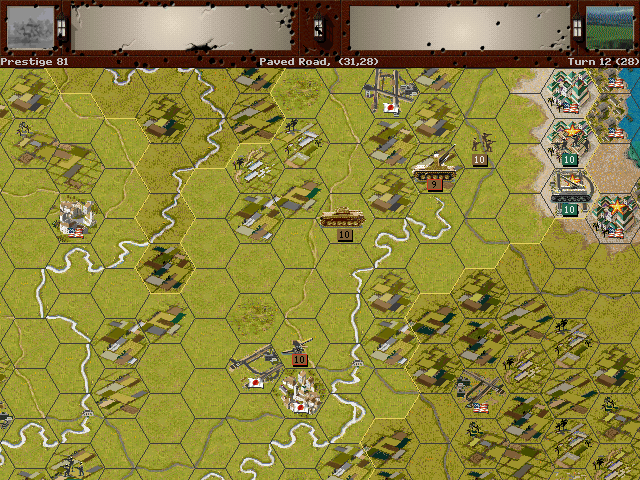
A portion of our force has finally reached Chicago.
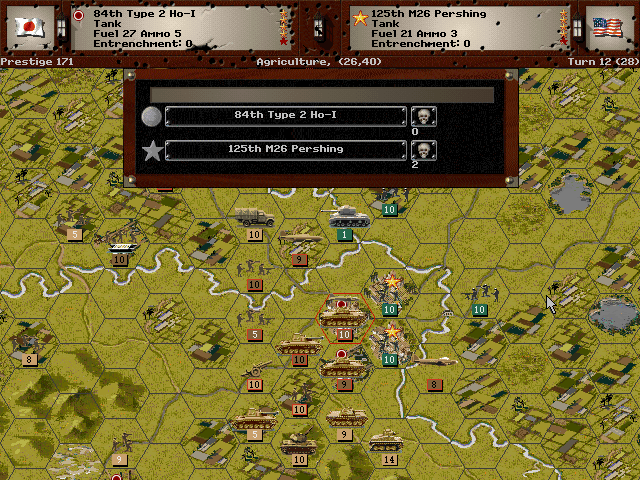
Down at St. Louis, we knock back the tank charge.
Allied Turn 12: April 17, 1945
Fair (Dry)
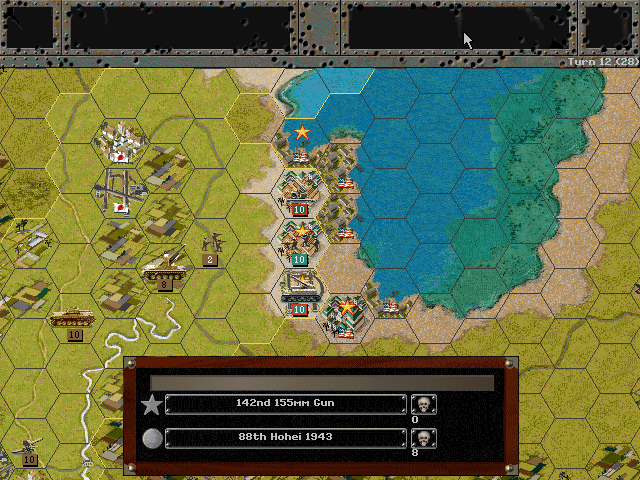
Artillery at Chicago is the biggest concern; we take heavy losses.
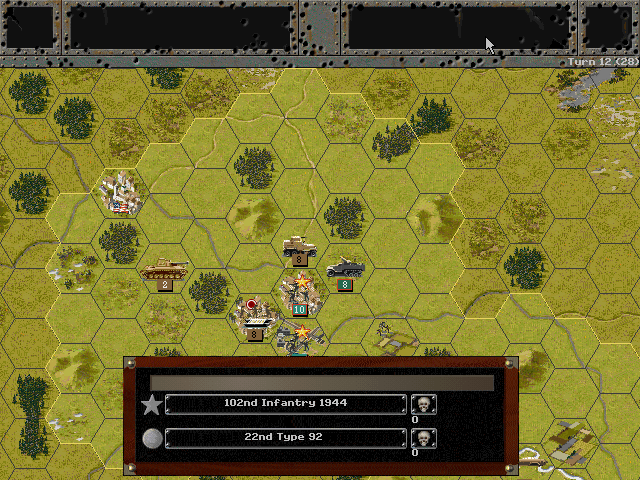
Some mild skirmishing continues in Minneapolis.
Axis Turn 13: April 17, 1945
Fair (Dry)

The battle for St. Louis proceeds fairly well.
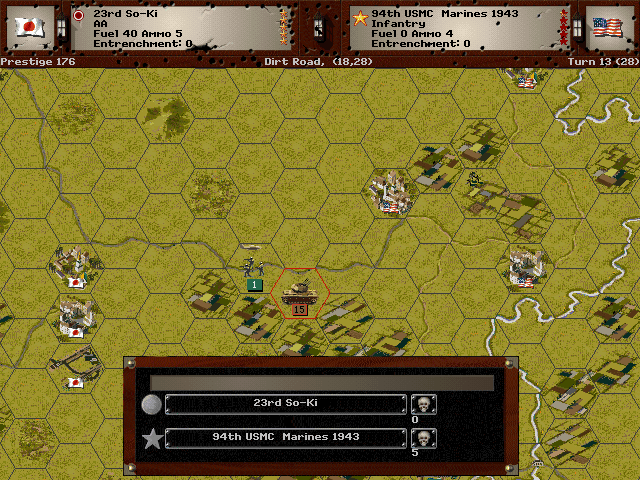
We've concentrated the fight at several key cities, but there is a lot of American territory that we also need to control. It's proving to be a bit difficult with our somewhat small core army.

The Minnesotans are nice enough to retreat from St. Paul without too much more of a fight.
Allied Turn 13: April 17, 1945
Fair (Dry)
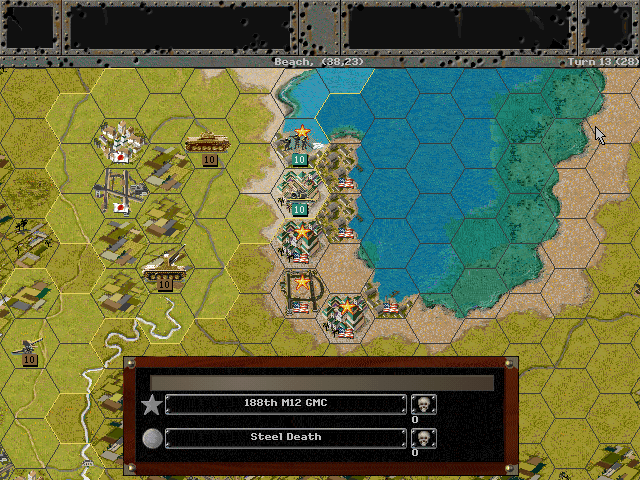
The guns of Chicago continue to rain down on our vangaurd.
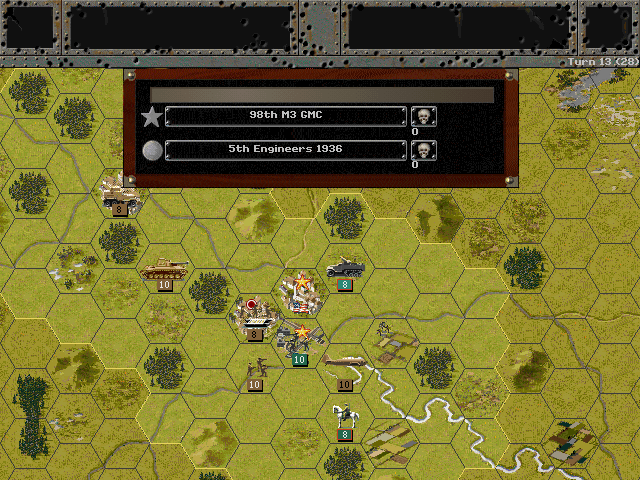
It turns out some of the units were just being shifted to other parts of the Twin Cities. Some of the defensess are left abandoned, however.
German Turn 13: April 17, 1945
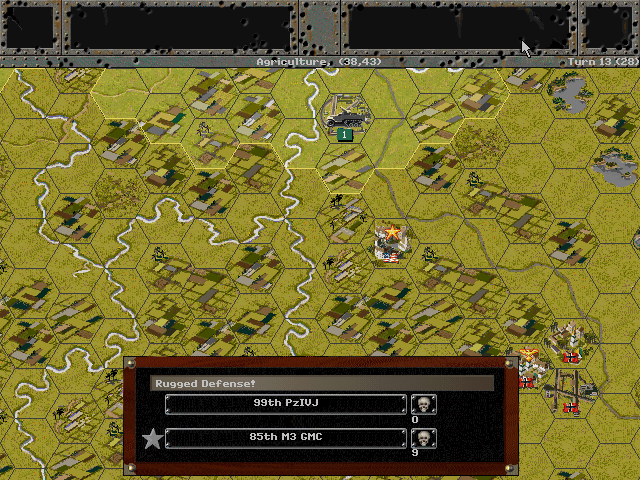
We hear the first reports of German panzers in battle; they seem to be engaged near Nashville.
Axis Turn 14: April 17, 1945
Fair (Dry)
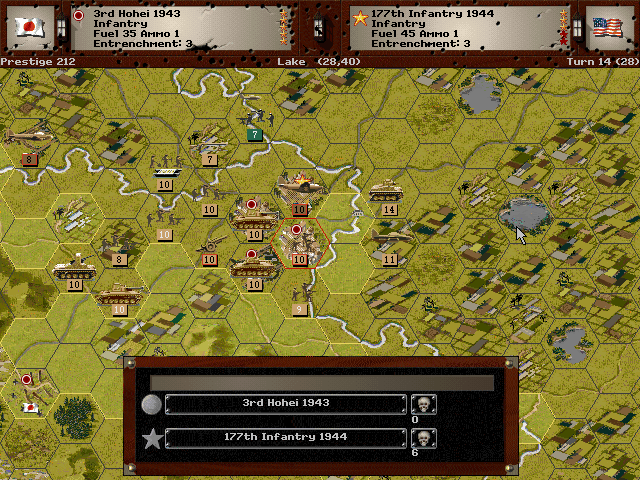
St. Louis falls into our hands.

In the north, we secure the Twin Cities.
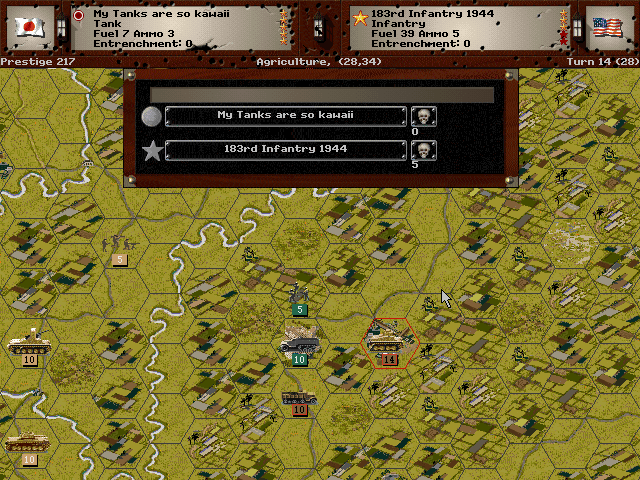
We start to push onward to clear the way to Chicago from the south.
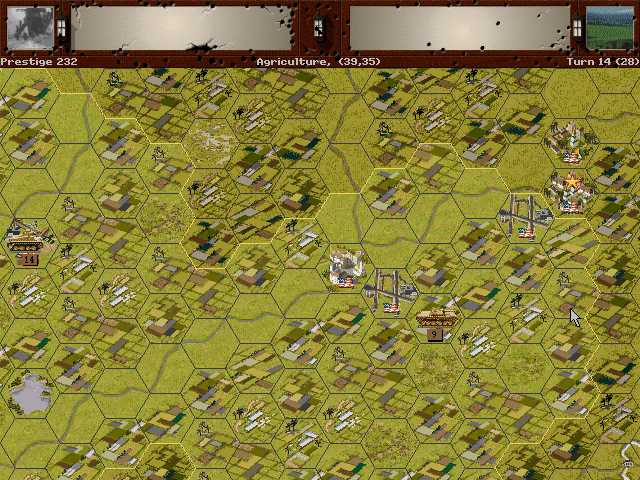
The highway to Indianapolis is also scouted.
Allied Turn 14: April 17, 1945
Fair (Dry)
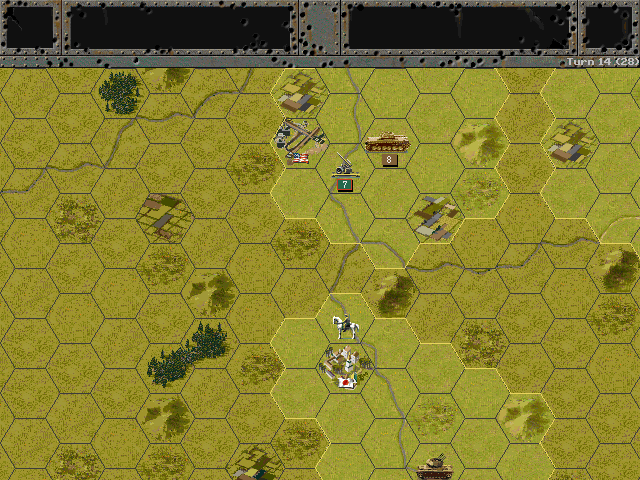
Some cavalry that were roaming the Iowa countryside slipped into our rear area.
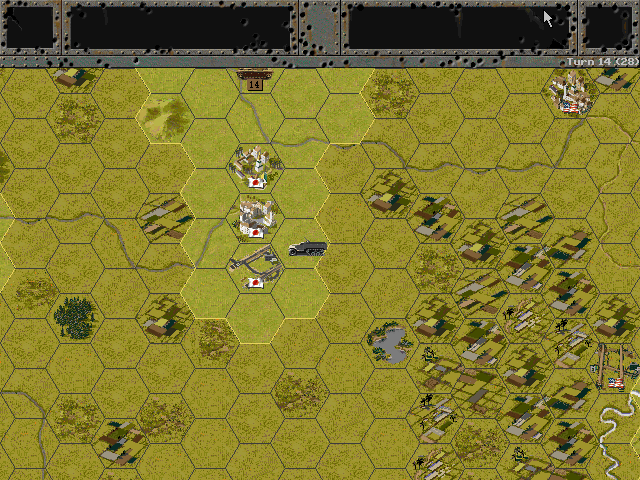
A few other units are also disrupting us in this region.
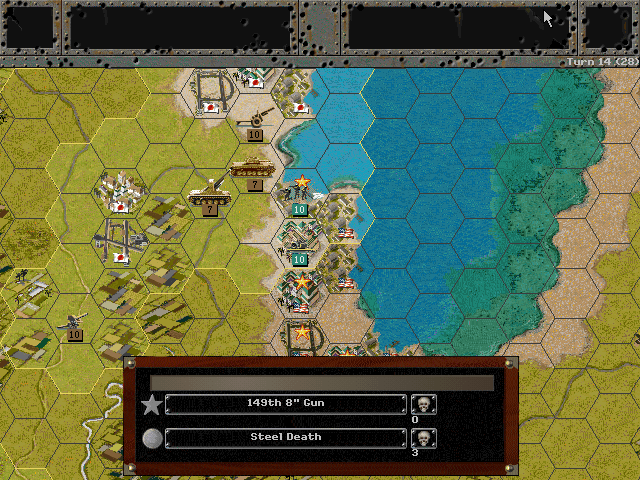
Shelling at Chicago is still fearsome.
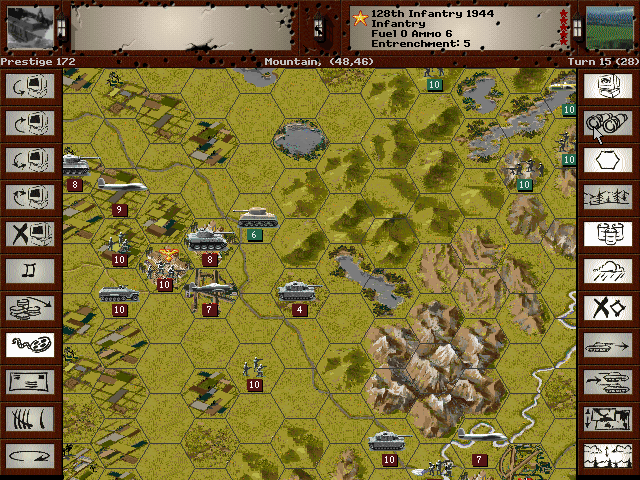
Recon photos of the German lines are delivered to us. They appear to be in a tough tank duel, but they have superiority in numbers.
I grabbed this using the 'view hidden units' just to get an idea of the situation.
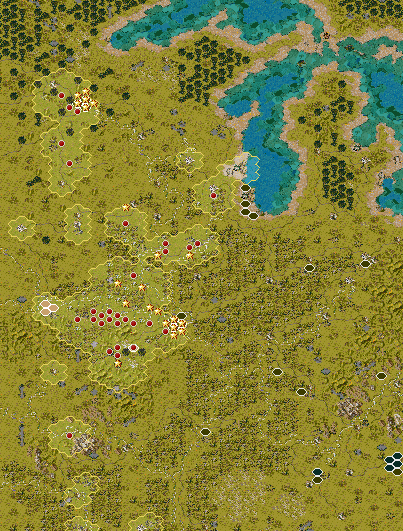
Unit Spotlight
Fukuryu Divers (several thousand trained; likely none used)
PG Name: Fukuryu Type:Submarine
Effective Date: 7/45
Value:10 Cost:24 Spot:2 Move:2 MM:Sub only Trans:Air Fuel: 10
Init:3 Range:0 SA:0 HA:0 AA:0 NA:10 DA:6 GD:8 AD:9 TD:4 DD:- Ammo:1
Special: Frogman, Kamikaze
A suicide unit designed as a last-ditch shoreline defense, the Fukuryu were men in diving suits armed with a mine on a stick. The idea is as crazy and impractical as it sounds. The hope was that these would be able to take out landing craft in the event of an invasion of the Home Islands. It was highly unlikely to be effective. Although they were never deployed, quite a lot of the men died in training — not from their own weapons, but from rebreathers that were difficult to use properly.
In-game analysis: Yet another fairly useless kamikaze weapon. This one is at least a little interesting, since it's undetectable without a sonar ship around. A few of these could keep the enemy on its toes, but real subs are still a better option.
Sen-Taka Submarine (3 built)
PG Name: Sen-Taka Type:Submarine
Effective Date: 8/45
Value:5 Cost:60 Spot:3 Move:4 MM:Coastal/Sub Trans:Air Fuel: 92
Init:3 Range:2 SA:0 HA:0 AA:0 NA:10 DA:0 GD:8 AD:4 TD:8 DD:12 Ammo:10
One of the last submarine designs of the war from Japan, these were 'fast-attack' submarines. The 'fast' part referred to their underwater speed; although slow on the surface, they were twice as fast when submerged as most other Japanese subs. Japan's dwindling production capacity allowed only a few to be built, and they came too late in the war to end up being tested in battle.
In-game analysis: I like this one for the value. It's tough to kill as long as it's underwater, and it's just as deadly as the models that cost twice as much. It's a shame it's only available at the end of the war (it'd also be neat if it could actually move at its rated speed above and below the waves, which would be more realistic).
Aichi B7A2 Ryusei (Grace)
PG Name: B7A Grace Type:Tac Bomber
Effective Date: 7/45
Value:37 Cost:444 Spot:3 Move:11 MM:Air Trans:Naval Fuel: 127
Init:8 SA:10 HA:10 AA:[10] NA:14 GD:12 AD:15 Ammo:8
Special: Kamikaze, Torpedo Bomber
This model was one of the last planes produced by Japan in the war. It was designed to be a single plane that could function as either a dive bomber or torpedo bomber, while having the maneuverability of a fighter plane. It actually seems to have met those specifications rather effectively. Very few were produced before the war ended, and only a small number ever saw combat.
In-game analysis: This plane is slightly more balanced than the Frances, but I'm uncertain as to whether that makes it definitively better. This model obviously has the edge in engagements that include naval targets, and it is also better protected against flak, which kind of makes me think it's the winner most of the time (assuming that the extra expense is not a concern). Unfortunately it really shows up too late for the question to be meaningful.